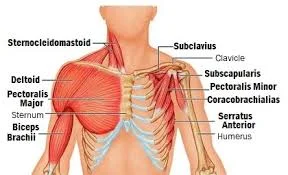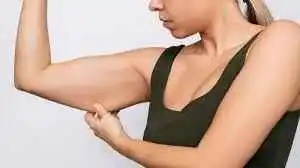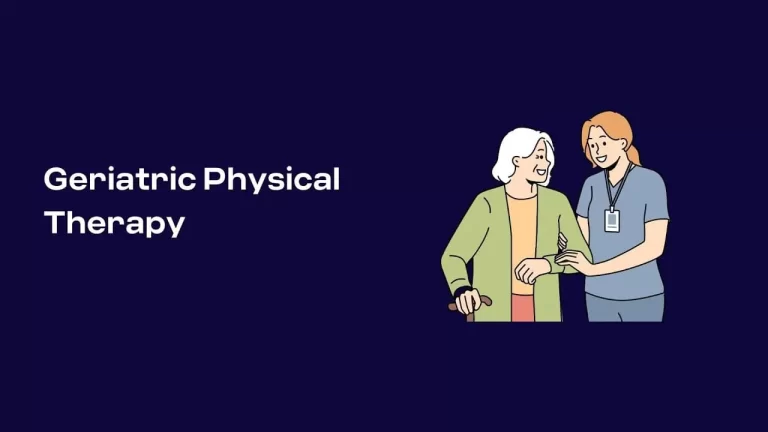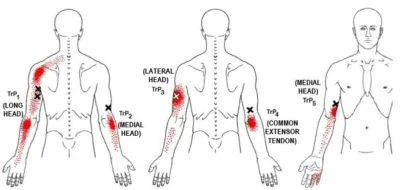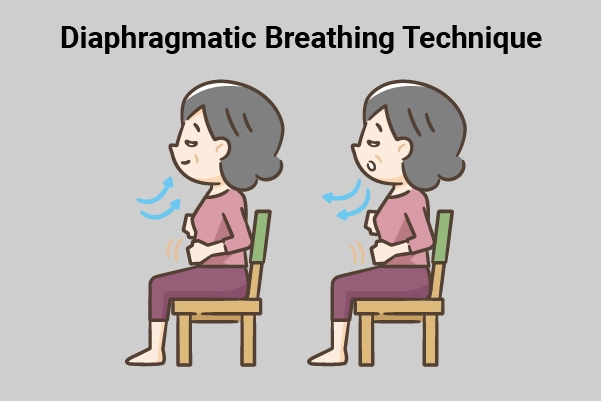12 Best Exercises For Gastrocnemius Strain
Exercises for Gastrocnemius Strain are an essential part of your overall treatment plan, along with medical care.
What is a gastrocnemius strain?
A strong superficial muscle at the rear of the lower thigh, the gastrocnemius muscle is used for standing, walking, running, and jumping. A partial or complete tear or rupture of the gastrocnemius muscle results from overstretching the muscle. In older athletes, “tennis leg” refers to an acute tear of the medial head of the gastrocnemius muscle, which causes serious problems and unexpected, intense calf pain.
A sudden, intense, or sharp pain in the leg, frequently followed by a sound, is the symptom. The player’s severe pain usually prevents them from playing again. Based on the severity of the damage, the recovery period could take anything from a few days to several weeks.
The gastrocnemius muscle’s anatomy:
One superficial two-headed muscle is the gastrocnemius. This muscle is situated just below the layers of skin on the back of the lower thigh. The shin muscle is mostly composed of the gastrocnemius because it is close to the skin’s surface.
It is a big muscle on the back of the leg. The calf muscle group is composed primarily of the most superficial muscles on the rear of the leg.
- Origin
The surfaces of the femur’s medial condyle and the leg bone’s aspect condyle are closest to the body parts.
- Insertion
Achilles tendon (calcaneu stendon ) entering the tarsi fibular or mid-posterior.
- Nerve
The sciatic nerve, the tibial nerve, and the S1–S2 nerve roots.
- Actions
Knee flexion and plantar flextion
Gastrocnemius strain grades:
Grade 1:
- Muscle damage from a grade 1 injury is limited, though there may be intense pain at the site.
- Possibly able to carry on with an activity, either pain-free or with only minor difficulty.
- On average, it takes 10–12 days to return to sports after experiencing unilateral calf rise pain.
Grade 2:
- Walking can be challenging for those with grade 2 injuries, which result in moderate muscle loss.
- They frequently feel a sharp pain that worsens as they extend or flex their foot.
- The typical recovery period is 16–21 injury days, with symptoms including loss of flexibility, pain, and weakness with resisted plantar flexion, and pain with active plantar flexion.
Grade 3:
- A grade 3 injury involves a total muscle tear, which can result in severe calf edema and bruises.
- It may take three to four months to recover fully, and in certain cases, surgery may even be required.
- The average recovery period after surgery is six months.
- There can be a noticeable weakness in the calf muscle’s ability to contract.
Causes:
- Previous injury
With repeated gastrocnemius strains, the athlete’s scar tissue is likely to be fibrotic, which absorbs stresses differently and is therefore more likely to rupture when the muscle is strained.
- Less-used or deconditioned muscles
The cold, unstretched muscles used for competition by people who play sports are far more prone to rupture when pushed than conditioned and stretched muscles.
- Activity level and age
Middle-aged athletes who play sports are more likely to have medial gastrocnemius. This age group usually resumes moderate to high levels of physical activity, but not consistently, and they are also likely to retain a moderate amount of muscle mass from their more active days.
Signs and symptoms:
- The patient is complaining of pain in the calf that also spreads to the ankle or knee. Furthermore, the patient reports pain when moving their ankles.
- It is typically reported that there was a loud click when the medial gastrocnemius was strained.
- When the medial gastrocnemius muscle is palpated, it is found to be tender throughout, but the medial musculotendinous junction is where the tenderness is most noticeable.
- Having difficulty engaging the muscle or standing on toes.
- Calf muscle pain and swelling or bruises.
- Difficulty when flexing the plantar bones or when the muscles are contracted against resistance.
Exercises advantageous:
- Alleviate the pain in the gastrocnemius muscle
- Lessening the edema in your muscles
- Improve the ligaments and the related joint’s complete range of motion
- Strengthens the muscles of the gastrocnemius.
- Improve flexibility
Exercises For Gastrocnemius Strain:
Standing Gastrocnemius stretch
- You should stand a few inches from a wall.
- Approach the wall with your right foot.
- Your palms should be toward the wall.
- Take a right knee bend.
- Your left heel should be flat on the ground as you bend forward with your left leg straight.
- Hold this position for a few seconds.
- Then return to your neutral position.
- Then relax.
- Repeat this exercise five to ten times.
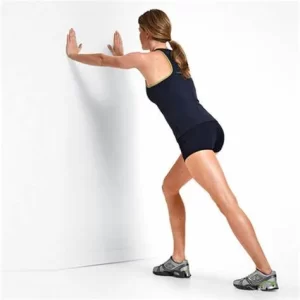
Ankle-toe movement
- Start with a comfortable sitting or standing position.
- As close to your body as you can, flex your ankle.
- Hold this position for a few seconds.
- Then shift your toes out from the middle of your body.
- Then return to your neutral position.
- Then relax.
- Repeat this exercise five to ten times.
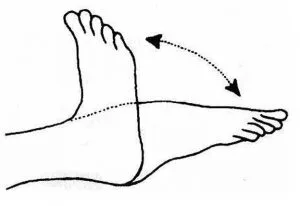
Calf raises
- Place your feet shoulder-width apart, toes facing front, on a yoga or exercise mat.
- Keep your shoulders down, your back straight ahead, and your core muscles tight.
- Slowly raise your heels while maintaining an extended knee position.
- Hold this position for a few seconds.
- Put your heels back on the ground.
- Then return to your neutral position.
- Then relax.
- Repeat this exercise five to ten times.
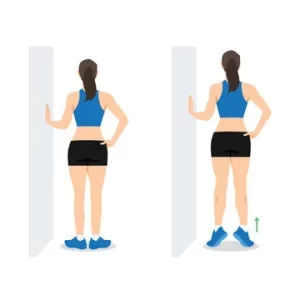
Bent-knee calf raise
- Move both of your feet toward the step’s edge to begin on a stair step and continue until your heels are on the edge and stretched off the edge.
- After that, bend both knees.
- Keeping your knee angle constant, lower your heels below the step while taking a deep breath.
- Then, as you lift your heels toward the ceiling, exhale.
- Inhale when you lower your heels below the step, and exhale as you lift them.
- Then return to your neutral position.
- Then relax.
- Repeat this exercise five to ten times.
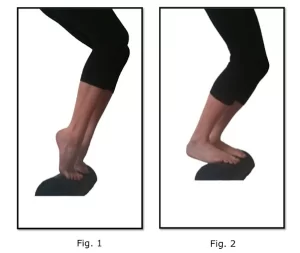
Seated toe raise
- Step onto the chair and settle in.
- Keep your shoulders straight and sit up upright.
- Your hands might be resting on your thighs or you can grab the chair’s side.
- Next, lift your toes as high as you can off the ground.
- Hold this position for a few seconds.
- Then return to your neutral position.
- Then relax.
- Repeat this exercise five to ten times.
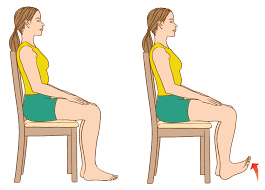
Seated calf raise
- Take the chair and get into a sitting position.
- From here, lift your heels off the floor and push up on your toes.
- Hold this position for a few seconds.
- Gently lower your heels again.
- Then return to your neutral position.
- Then relax.
- Repeat this exercise five to ten times.
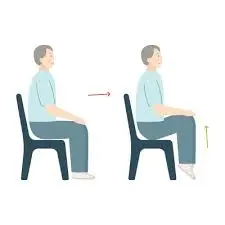
Donkey calf raise
- Position a weight plate or aerobic step on the floor a few feet behind a railing or other stable, waist-high item.
- Placing both heels of your feet on the far edge of the step, fold forward at the hip joints while holding the handle with both hands.
- After lowering your heels as far as you can toward the floor, hold this pose for a few seconds while maintaining the stretched stance.
- Compress your calves and lift your heels to the maximum height possible at the initial stage of the exercise, then hold them for a little while.
- Then return to your neutral position.
- Then relax.
- Repeat this exercise five to ten times.
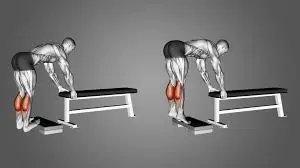
Squat with gastrocnemius raise
- Get into a standing position with your toes slightly pointed out.
- Squat down by pulling your hips back behind you and lowering the knee.
- Your knees should be in line with the middle of your foot; do not allow them to pass past your big toe.
- Get out of the squat position.
- At the top, slowly move to the heels of your feet.
- Lower your heels back down slowly.
- Then return to your neutral position.
- Then relax.
- Repeat this exercise five to ten times.
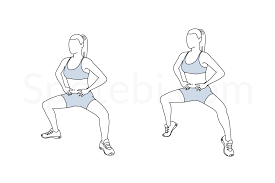
Foam Roller Exercise
- The floor is where you sit, with your legs straight in front of you.
- Next, place the roller underneath the calves.
- Roll carefully from the knee joint to the ankle while using your hands for support.
- Stop if there are any tight or uncomfortable areas.
- Do it for a few seconds.
- Then return to your neutral position.
- Then relax.
- Repeat this exercise five to ten times.
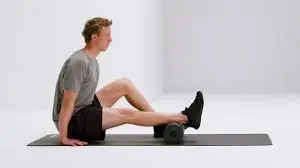
Seated-leg-extension
- You should sit on the chair’s outside edge.
- Your heels should be level on the ground.
- To gain support, hold onto the chair’s sides.
- While maintaining a straight back and an elevated chest, extend one leg in front of you.
- Hold this position for a few seconds.
- Afterward, carefully lower your leg down.
- Then return to your neutral position.
- Then relax.
- Repeat this exercise five to ten times.
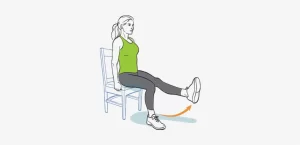
Standing soleus stretch
- Stand yourself two to three feet away from a wall.
- Take a right footstep near the wall.
- Use both palms to touch the wall.
- Lean forward and slightly bend both knees.
- Keep both heels planted on the floor.
- Hold this position for a few seconds.
- Then let both legs relax.
- Then return to your neutral position.
- Then relax.
- Repeat this exercise five to ten times.
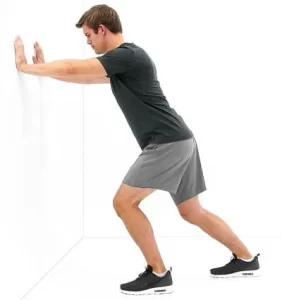
Single-leg calf raises on a step with the knee bent
- Place the soles of your feet on the edge of a step or elevated platform with your heels dangling off as you stand there.
- Position one foot below the other while maintaining your toes on the step’s edge.
- Raise your heel as high as you can gradually while maintaining a neutral position on your foot’s toes.
- Hold this position for a few seconds.
- As you lower your heel back below the step level, feel the stretch in your calf muscles.
- Then return to your neutral position.
- Then relax.
- Repeat this exercise five to ten times.
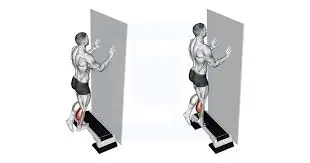
When exercising, what safety measures are necessary?
- Stay hydrated
- Exercise should be stopped right away as the pain becomes severe.
- When exercising, keep your posture upright.
- Make sure that all of your equipment has been set up correctly.
- Stay away from difficult exercises.
- Before and after workouts, you should stretch as often as the exercise’s instructions recommend.
- It’s usually hard to stretch the muscles in your stiff joints. Stretches and exercises are bad for you and make your problem worse, therefore they shouldn’t harm you or make you feel like someone has hurt you.
- Use light bending and stretching techniques.
- Wear loose, comfortable clothing during training to promote relaxation and expand your range of motion.
- Give yourself a break in between exercises.
When will you stop exercising?
- Fever
- You should quit working out if it hurts.
- Burning sensation in the muscles.
- You’re not in good health.
- If there is numbness or pain
- Headache
Prevention:
- keeping the muscles in your calves strong so they can take in the energy from unexpected physical strain.
- Participating in fitness programs to improve flexibility, strength, balance, and coordination.
- Increasing training length and difficulty gradually.
- Acquiring the right form for sports and fitness activities. This will lessen the strain on the calf muscles as well as all other muscles.
- Using suitable footwear and other protective equipment.
- Undergoing training before a tournament to make sure they are prepared.
FAQ:
Which type of exercise is beneficial for your gastrocnemius muscle?
Calf raises
The traditional exercise for building muscle in the calf is the calf raise. Using your body weight, you tone and strengthen the gastrocnemius and soleus. For balance, start by standing close to a wall.
Should I massage a gastrocnemius strain?
Depending on how severe the strain is and how long it has been since the injury, massaging the torn leg muscle directly could negatively impact the healing process and result in additional muscular problems. Therefore, follow your physical therapist’s advice regarding whether or not you should be doing this on your muscle strain.
How may a gastrocnemius strain be healed?
Early weight bearing, when tolerated, and relative rest, ice, compression, and elevation (RICE) are the first treatments for a medial calf injury. 24-72 hours should be allotted for the initial course of treatment. Applying ice therapy over a moist elastic bandage that also offers compression is ideal.
What signs of a weak gastrocnemius are present?
Gastrocnemius weakness causes calcaneal gait, in which the sole may not make touch with the ground while walking. A person may have trouble walking uphill and climbing stairs if their gastrocnemius is weak.
How is the gastrocnemius strain commonly referred to?
Due to their frequency in one particular sport, medial calf injuries are frequently referred to as “tennis leg” even though they can occur in a variety of sports or other activities. For instance, in a lunging shot, the back leg goes through a mechanism where the foot is dorsiflexed and the knee is stretched.
Gastrocnemius rupture: What is it?
A proximal calf injury following a quick push-off related to running or jumping is indicative of a gastrocnemius rupture, which can be detected clinically. Patients report soreness in the leg area along with a tearing or popping sensation.
What happens if you have weak gastrocnemius muscle?
Gastrocnemius weakness causes calcaneal gait, in which the sole may not make touch with the ground while walking. A person may have trouble walking uphill and climbing stairs if their gastrocnemius is weak.
How can a gastrocnemius strain be identified?
In addition to evaluating the injury report, the physician may palpate the entire medial gastrocnemius muscle to look for pain.
What are gastrocnemius muscle advantages?
The complex gastrocnemius muscle has an essential effect on posture and walking. It affects the entire lower limb, hip mobility, and the lumbar area. To support orthostatism and carry out daily and athletic actions, this muscle area is utilized.
How does a strain of the gastrocnemius feel?
The gastrocnemius’ medial head is where calf strains are most frequently encountered. In addition to experiencing severe pain in the calf, patients frequently describe hearing or feeling a “pop” in the medial region of the posterior calf or feeling as though they have been kicked in the rear of the leg.
If your gastrocnemius has been torn, can you still walk?
In addition to causing abrupt, severe calf pain, a calf muscle rupture can make it difficult to walk or support weight on your leg.
Which exercise is most effective for a gastrocnemius strain?
Standing Gastrocnemius stretch
Standing calf raise exercise
Bent knee calf raise
Seated calf raise
Foam Roller Exercise
How can a tear in the gastrocnemius muscle happen?
This injury may occur if you overstretch the muscle with an unexpected, fast movement. Among these motions include jumping and sudden direction changes. Individuals who participate in sports like basketball or tennis are more susceptible to this type of muscle damage. An improper warm-up or excessive exercise might weaken the gastrocnemius muscle.
References:
- June 12, 2024; Gilroy, F. Frank Gilroy Physiotherapy’s exercise regimen for calf (gastrocnemius) injuries. Physiotherapy by Frank Gilroy. Calf injury rehabilitation through patient exercises for the ankle: https://www.frankgilroyphysiotherapy.co.uk/ankle/
- Gastrocnemius Muscle Tear: An Understanding (n.d.). Saint Luke’s Medical Center. This link will help you understand the gastrocnemius muscle tear.
- Sports Medicine Australia, “Gastrocnemius (Calf) Strain,” n.d. Sports Medicine Australia. Gastrocnemius calf strain Fact Sheets: https://sma.org.au/resources/
- May 16, 2022: Valand, B. Gastrocnemius strain: Cause, Signs, Therapy, and Physical Activity Samarpan. Physiotherapy Clinic in Samarpan. This is a treatment exercise for gastrocnemius strain: https://samarpanphysioclinic.com/
- Image 4, The Pilates Studio. [date unknown]. Day 9: Steps with a Bent Leg and Calf Raises. www.pilatesexerciseoftheday.blogspot.com/2012/07/day-9-calf-raises-with-bent-leg-on-step.html [
- Image 5, Dr. Nidhiphysio. April 30, 2023. How to Perform Ankle Exercises and Their Health Benefits? Variation-Mobile. https://mobilephysiotherapyclinic.in/ankle-exercises-how-to-do-variation/ Mobile Physiotherapy Clinic
- Image 7, Luna, D. August 16, 2023c. Donkey Calf Raises Advantages, Worked Muscles, and More. Motivate the United States. Donkey-calf-raises: https://www.inspireusafoundation.org/
- Image 8, Daisy. June 17 (1921e). Plie Squat Calf Raise Workout Instruction with Pictures. SPOTEBI. https://www.spotebi.com/exercise-guide/quat-plie-calf-raise/
- Image 9, Calves with foam rollers. 25 July 2024. https://blackroll.com/exercises/exercises-by-body-area/foam-roller-calves BLACKROLL
- Image 12, Manual for Lifting. 2023b, April 24. Instructions, Benefits, and Form for the Single Leg Calf Raise Off Step. The single-leg calf raise off-step is described in https://liftmanual.com/



